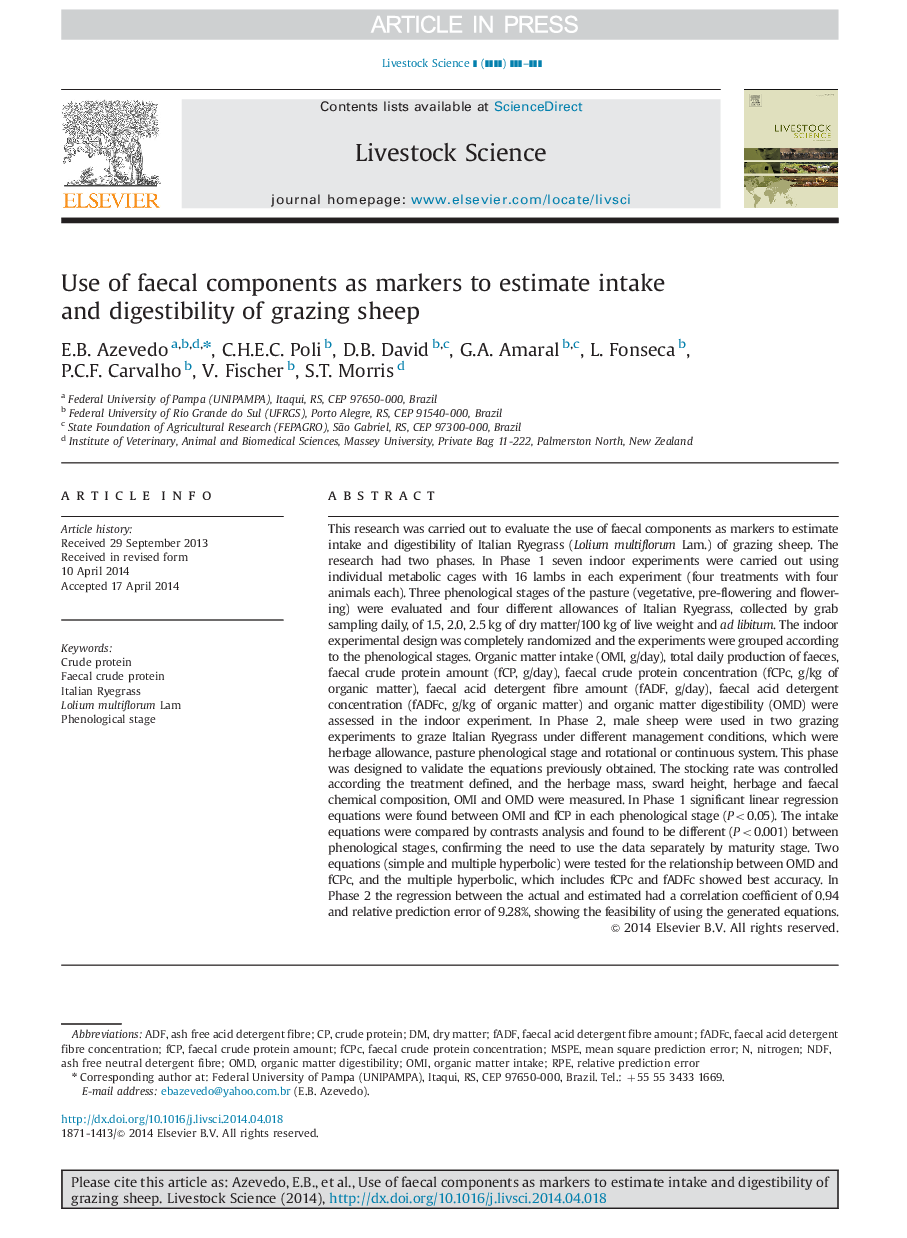| Article ID | Journal | Published Year | Pages | File Type |
|---|---|---|---|---|
| 8502203 | Livestock Science | 2014 | 9 Pages |
Abstract
This research was carried out to evaluate the use of faecal components as markers to estimate intake and digestibility of Italian Ryegrass (Lolium multiflorum Lam.) of grazing sheep. The research had two phases. In Phase 1 seven indoor experiments were carried out using individual metabolic cages with 16 lambs in each experiment (four treatments with four animals each). Three phenological stages of the pasture (vegetative, pre-flowering and flowering) were evaluated and four different allowances of Italian Ryegrass, collected by grab sampling daily, of 1.5, 2.0, 2.5Â kg of dry matter/100Â kg of live weight and ad libitum. The indoor experimental design was completely randomized and the experiments were grouped according to the phenological stages. Organic matter intake (OMI, g/day), total daily production of faeces, faecal crude protein amount (fCP, g/day), faecal crude protein concentration (fCPc, g/kg of organic matter), faecal acid detergent fibre amount (fADF, g/day), faecal acid detergent concentration (fADFc, g/kg of organic matter) and organic matter digestibility (OMD) were assessed in the indoor experiment. In Phase 2, male sheep were used in two grazing experiments to graze Italian Ryegrass under different management conditions, which were herbage allowance, pasture phenological stage and rotational or continuous system. This phase was designed to validate the equations previously obtained. The stocking rate was controlled according the treatment defined, and the herbage mass, sward height, herbage and faecal chemical composition, OMI and OMD were measured. In Phase 1 significant linear regression equations were found between OMI and fCP in each phenological stage (P<0.05). The intake equations were compared by contrasts analysis and found to be different (P<0.001) between phenological stages, confirming the need to use the data separately by maturity stage. Two equations (simple and multiple hyperbolic) were tested for the relationship between OMD and fCPc, and the multiple hyperbolic, which includes fCPc and fADFc showed best accuracy. In Phase 2 the regression between the actual and estimated had a correlation coefficient of 0.94 and relative prediction error of 9.28%, showing the feasibility of using the generated equations.
Keywords
Related Topics
Life Sciences
Agricultural and Biological Sciences
Animal Science and Zoology
Authors
E.B. Azevedo, C.H.E.C. Poli, D.B. David, G.A. Amaral, L. Fonseca, P.C.F. Carvalho, V. Fischer, S.T. Morris,
